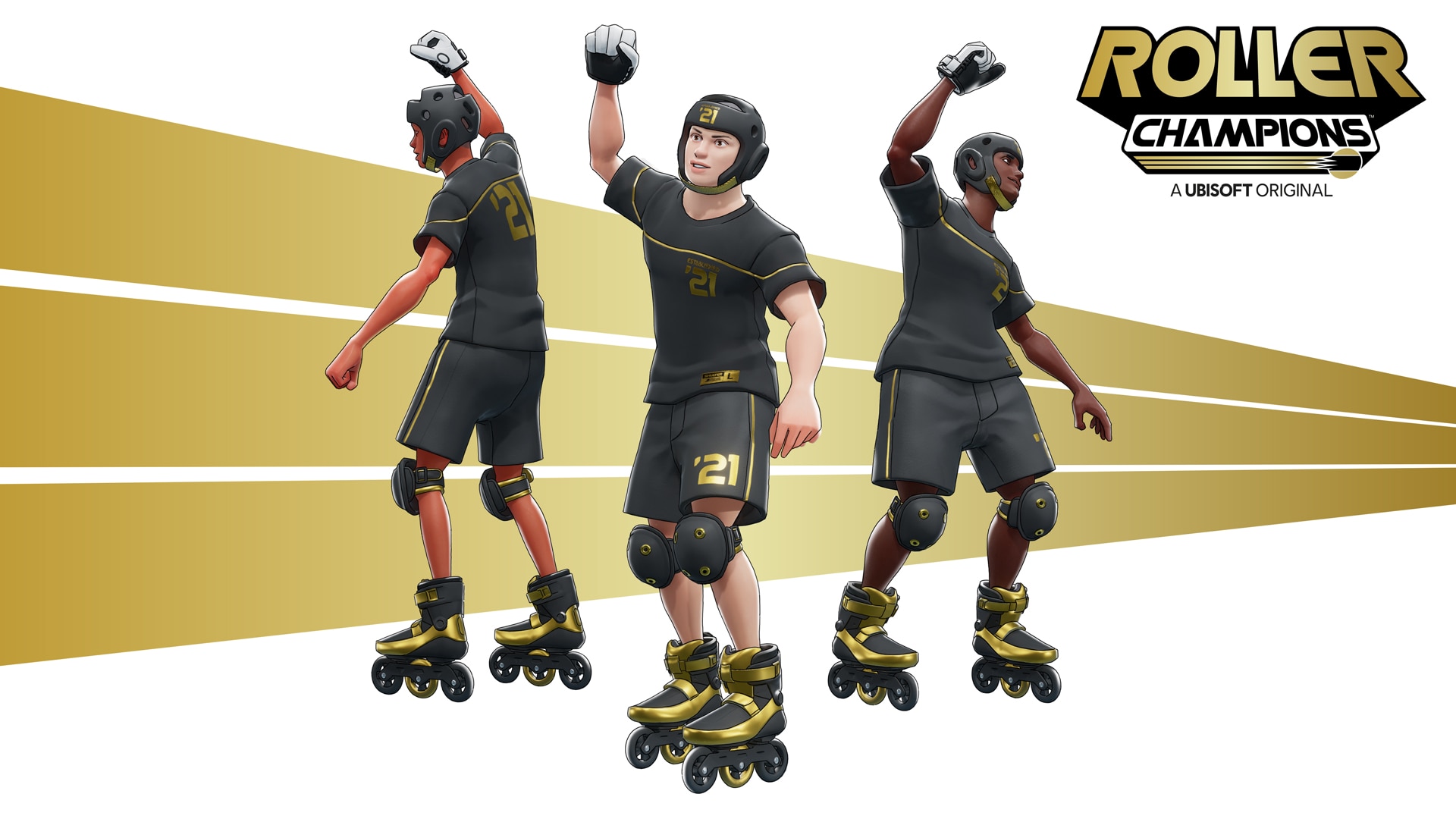The Uppercut is a move that was introduced in test phases before Roller Champions' launch, and it has seen adjustments ever since its introduction. A new change was introduced with the Dragon's Way season update:
- The Uppercut diminishing return window has been slightly increased (from 2.25 sec to 3 sec).
This also directly - and intentionally - impacted mechanics around players' abilities to keep themselves suspended high on the vertical surfaces of the arena; a technique called "wall-stalling."
LAW OF GRAVITY
Since launch, wall-stalling had been an incredibly effective emergent playstyle. Keeping the ball in the upper heights of the map as a single player self-passing to maintain altitude while juggling the ball. The only thing that could bring them back down to the ground was a tackle, an error, or a willful transfer of possession (like scoring or passing.)
Roller Champions is fundamentally a game about movement, momentum, and energy. Working with your team to swing back and forth along the walls, gaining energy then using speed to move around the arena and score is the core design.
Preserving those swings, those momentum changes, relies on a player predictably returning to the ground where more gameplay actions, reactions, and plays can happen with both teams fighting to score instead of just one person's display of dexterity and skill. While it's true that a player could at any moment gain speed by coming down from a wall-stall, if an infinite stall isn't possible, then they must come down to the ground, gain speed, and open themselves to defender opportunities.
On the ground, more of the game can be played and a greater depth of skill can be shown, even if wall-stalling is technically more advanced as a categorized style. Staying on the wall took knowledge and technique, undoubtably - it simultaneously limited the possible depth of play that could occur by keeping the game at high altitude.
STALLING FOR TIME
The design intention is to maximize the opportunities that can be made and acted upon - there are more opportunities for the game to happen when on the ground instead of the game of "keep-away" at high altitudes.
At the end of the day, wall-stalling buys time to make decisions. While that time is incredibly valuable for the player holding the ball, it means for the other five players in the match (and anyone watching the match) that nothing is happening.
Yes, defenders may try to tackle, but the onus being on defense to act keeps their options limited. Forcing the carrier eventually down to the ground gives back defensive options and opportunities.
COLLATERAL DAMAGE
But we are not infallible. From this emergent playstyle also came an ability to play dedicated goalie. Wall-stalling back and forth through the goal was a strong defensive tool in the kit and is now largely gone.
This was an impact we knew the change would have and we knew hurt the defense. We want to continue observing how the change impacts the game and take actions where we can to help address this and other methods of defending.
To that end, we're already looking into several changes sourced from community feedback to improve defense, some of which are coming down the pipeline to the live game soon (stagger on Air Tackle). And we're always open to further feedback on that change, the Uppercut change, or anything else. Like we said, we're not infallible.
Thank you for taking the time to read our breakdown of an important mechanic and our rationale for making a tough but important change to it with the recent update.
Join the community on TikTok or through our official Discord, where we also share updates, run contests, and talk about all things Roller!
You can also follow us on Twitter to keep an eye out for updates on the game!
- The Roller Champions Dev Team





